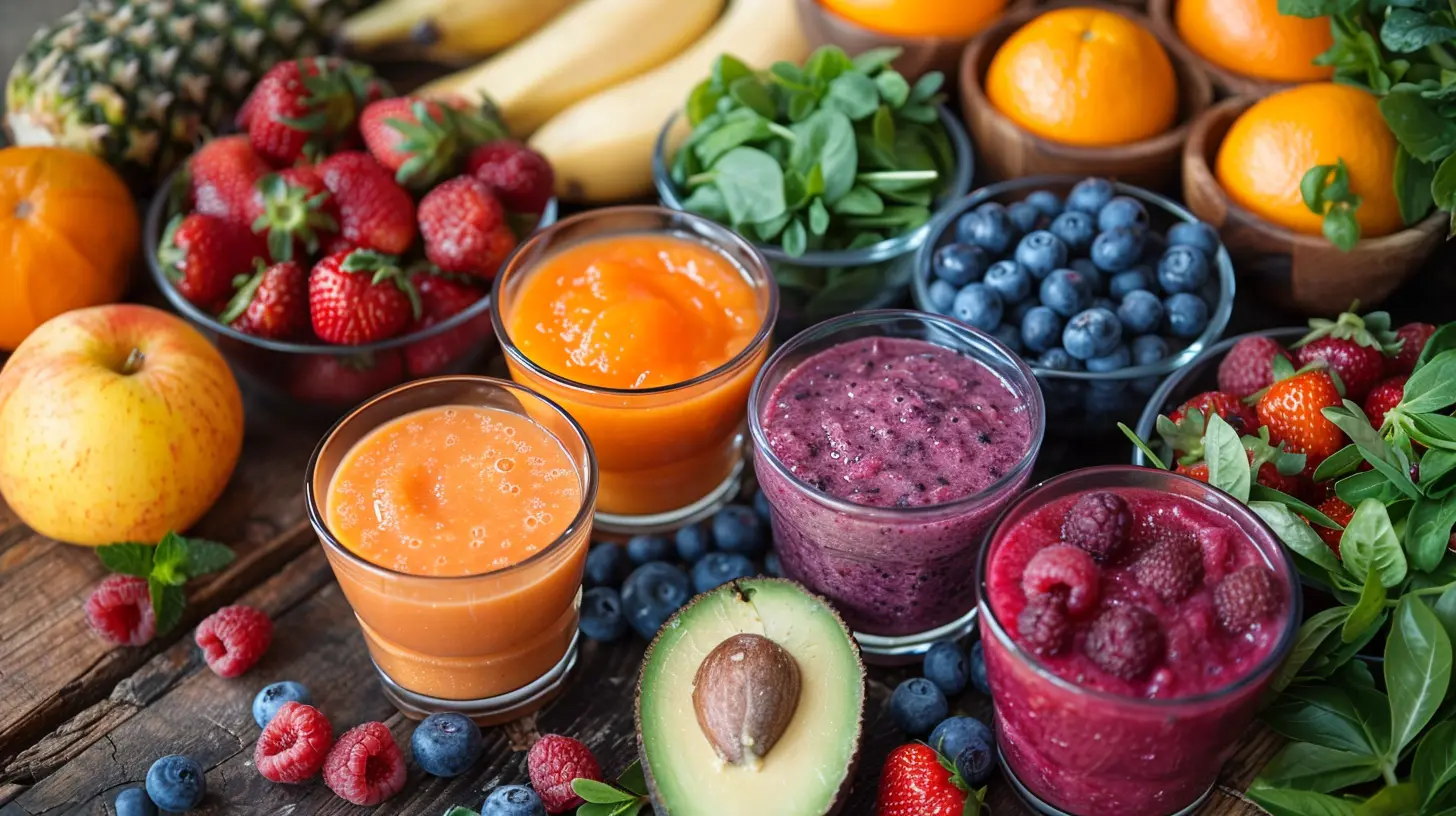How to Introduce Solid Foods in a Nutrient-Focused Way
22 June 2025
Making the transition from milk or formula to solid foods is a huge milestone for both babies and parents. But let's be honest—it can also feel overwhelming. When should you start? What foods should you introduce first? And how do you ensure your baby gets all the nutrients they need?
Don’t worry! We’re diving into everything you need to know about introducing solids in a way that prioritizes nutrition while making mealtime fun and stress-free. 
When Should You Start Introducing Solid Foods?
Every baby develops at their own pace, but most pediatricians agree that somewhere around 6 months is the sweet spot. Here are some telltale signs your little one is ready to graduate from an all-liquid diet:- They can sit up without support – Good posture helps prevent choking.
- They’ve lost the tongue-thrust reflex – If they instinctively push food out with their tongue, they might not be ready just yet.
- They show interest in what you're eating – If your baby watches you intently at mealtime or tries to grab food off your plate, it’s a strong sign.
- They can grasp objects and bring them to their mouth – Hand-eye coordination plays a role in self-feeding.
If your baby isn’t showing all these signs, don’t rush it. Starting too soon can lead to digestion issues or an increased risk of choking. 
The Best First Foods for a Nutrient-Focused Start
Not all first foods are created equal! While rice cereal used to be the go-to option, more parents today are opting for nutrient-dense whole foods instead. Here are some top picks:1. Avocado – The Brain-Booster
Avocados are packed with healthy fats, which are crucial for brain development. Their creamy texture makes them easy for babies to handle, and they can be mashed or served in small chunks.2. Sweet Potatoes – The Vitamin A Powerhouse
Rich in beta-carotene, sweet potatoes support vision and immune health. You can steam and mash them or serve them as soft, roasted strips for babies who are ready for finger foods.3. Bananas – The Gentle Digestive Aid
Bananas are a great first fruit because they’re naturally soft and rich in potassium and easy-to-digest carbohydrates. Simply mash them with a spoon or offer small pieces.4. Iron-Rich Foods – Essential for Growth
Breastfed babies, in particular, need extra iron around six months. Some great options include:- Egg yolks (scrambled or hard-boiled and mashed)
- Pureed meats like chicken or beef
- Lentils and beans (thoroughly cooked and mashed)
5. Full-Fat Yogurt – The Gut-Friendly Option
Dairy can be tricky, but full-fat yogurt is a safe early introduction. It provides calcium, protein, and probiotics for a happy tummy.
Baby-Led Weaning vs. Purees: Which One is Better?
There’s no one-size-fits-all approach when it comes to introducing solids. Some parents swear by traditional spoon-fed purees, while others prefer baby-led weaning (BLW).Traditional Purees
This method involves spoon-feeding smooth or mashed foods. It’s a great way to gradually introduce flavors and textures, but some babies may become dependent on being fed rather than learning to self-feed.Baby-Led Weaning (BLW)
BLW skips the spoon and lets babies feed themselves soft, manageable pieces of food. They’ll grab, explore, and chew (or gum) food at their own pace. If you go this route, make sure foods are cut into safe sizes to minimize choking risks.A Hybrid Approach
Many parents find success combining both methods—offering purees while also letting their baby experiment with soft finger foods. This can help babies develop a well-rounded eating experience.
How to Introduce New Foods Safely
When introducing solids, safety is key. Here are some important tips:- Start slow – Introduce one new food at a time and wait about 3–5 days before introducing another. This helps you spot potential food allergies.
- Watch for allergic reactions – Common allergy triggers include dairy, eggs, nuts, wheat, soy, and fish. If you notice hives, swelling, vomiting, or difficulty breathing, contact your doctor immediately.
- Keep textures appropriate – Early on, stick to soft, easy-to-swallow foods to prevent choking. As your baby’s chewing skills develop, you can gradually add more textures.
- Supervise at all times – Never leave a baby alone while eating.
- Skip added sugars and salt – Babies’ tiny kidneys can’t process excess salt well, and added sugars can create unhealthy taste preferences.
Building a Well-Balanced Plate
A well-balanced baby meal should include:✅ Healthy fats (avocado, nut butters, fatty fish)
✅ Protein (meat, beans, eggs, yogurt)
✅ Complex carbohydrates (sweet potatoes, oatmeal, whole grains)
✅ Fiber-rich veggies (broccoli, peas, carrots)
Variety is key! Exposing babies to different flavors and textures early on helps prevent picky eating down the line.
Common Mistakes to Avoid
Even with the best intentions, mistakes happen. Here are some common ones and how to avoid them:❌ Starting too early – Waiting until 6 months helps ensure your baby's digestive system is ready.
❌ Relying too much on packaged “baby foods” – Fresh, whole foods offer more nutrients and fewer additives.
❌ Ignoring food allergies – Introducing allergenic foods early and in small amounts may actually help prevent allergies.
❌ Forcing your baby to eat – Let them develop natural hunger and fullness cues rather than pressuring them to finish every bite.
Making Mealtimes Fun and Stress-Free
Eating should be an enjoyable experience for your baby. Here are some ways to keep things relaxed:🥄 Let them get messy – Yes, food will end up everywhere, but that’s part of the learning process.
👶 Eat together – Babies learn by watching, so try to enjoy meals as a family.
💡 Introduce a mealtime routine – Consistency helps babies feel comfortable with food.
Above all, trust your instincts and your baby’s cues. Some days they’ll love food, and other days they'll toss everything on the floor. That’s totally normal—just keep offering a variety of nutritious options and let them explore at their own pace.
Final Thoughts
Introducing solid foods is an exciting and sometimes messy adventure. By focusing on nutrient-dense options, offering a mix of textures, and keeping things fun and stress-free, you’re setting the foundation for a lifetime of healthy eating habits.Remember—every baby is different. Go at their pace, embrace the mess, and enjoy watching them explore the wonderful world of food!
all images in this post were generated using AI tools
Category:
Healthy EatingAuthor:

Kelly Snow
Discussion
rate this article
2 comments
Sara McAleer
Introducing solids is not just about food; it’s about nurturing trust and developing healthy habits.
November 6, 2025 at 5:03 AM

Kelly Snow
Absolutely! Building trust and healthy habits during this stage sets the foundation for lifelong nutritious choices.
Gabriel Smith
Great tips! I appreciate the emphasis on nutrient density for my baby's growth.
June 22, 2025 at 4:54 AM

Kelly Snow
Thank you! I'm glad you found the tips helpful for your baby's growth!


